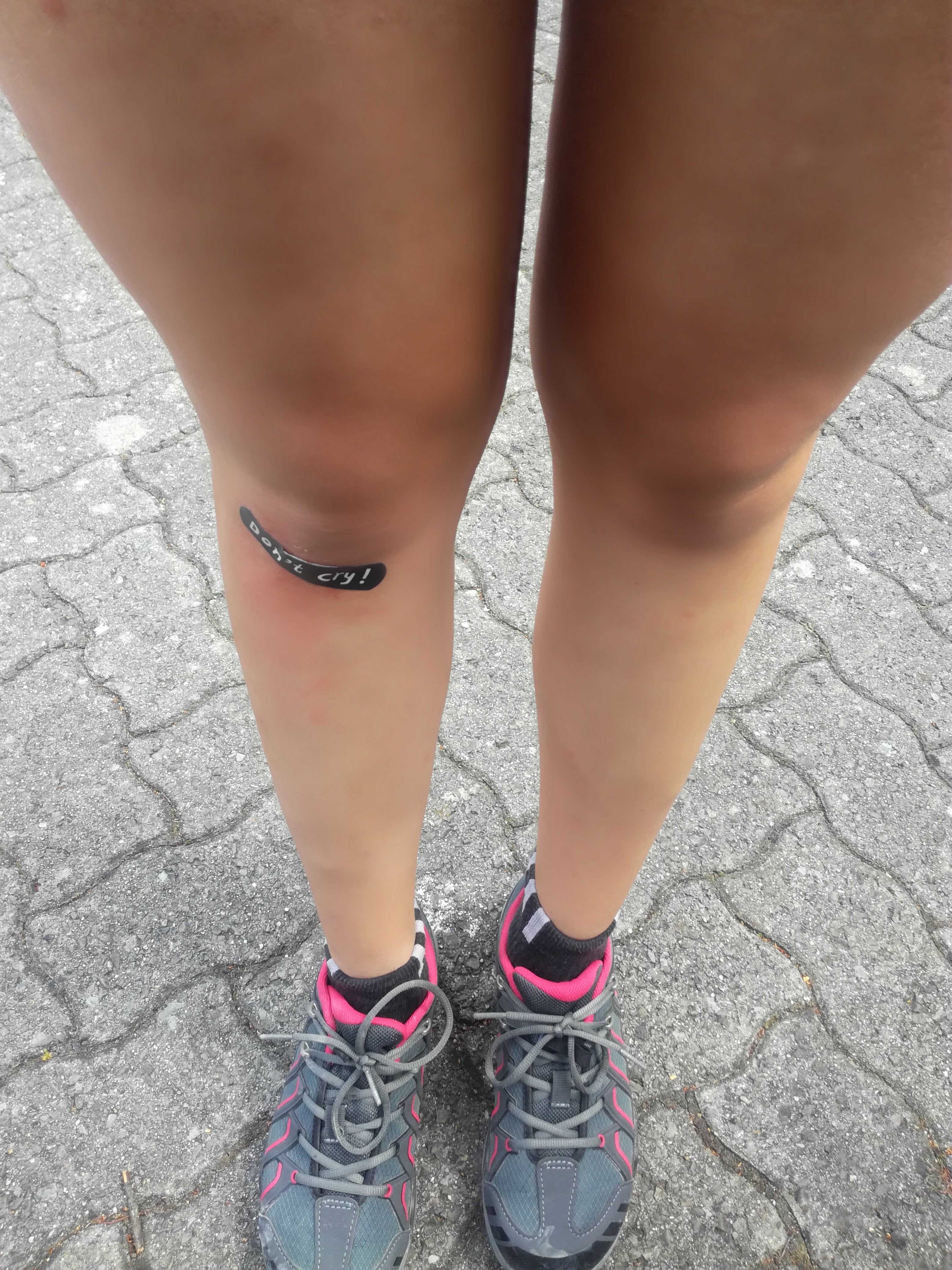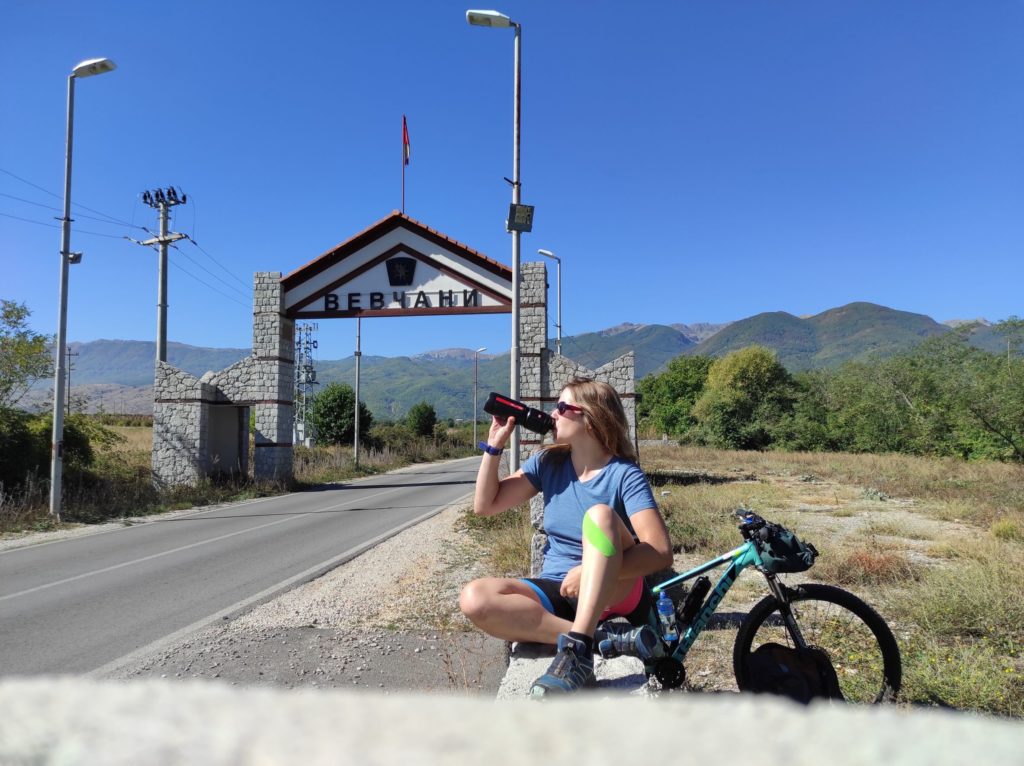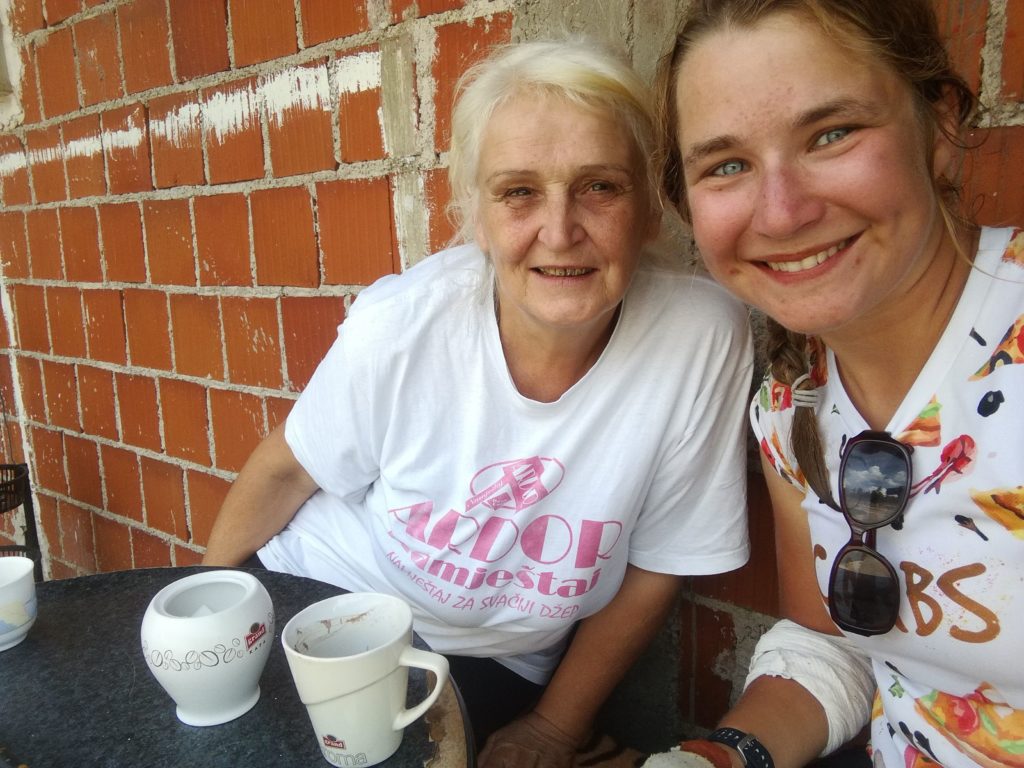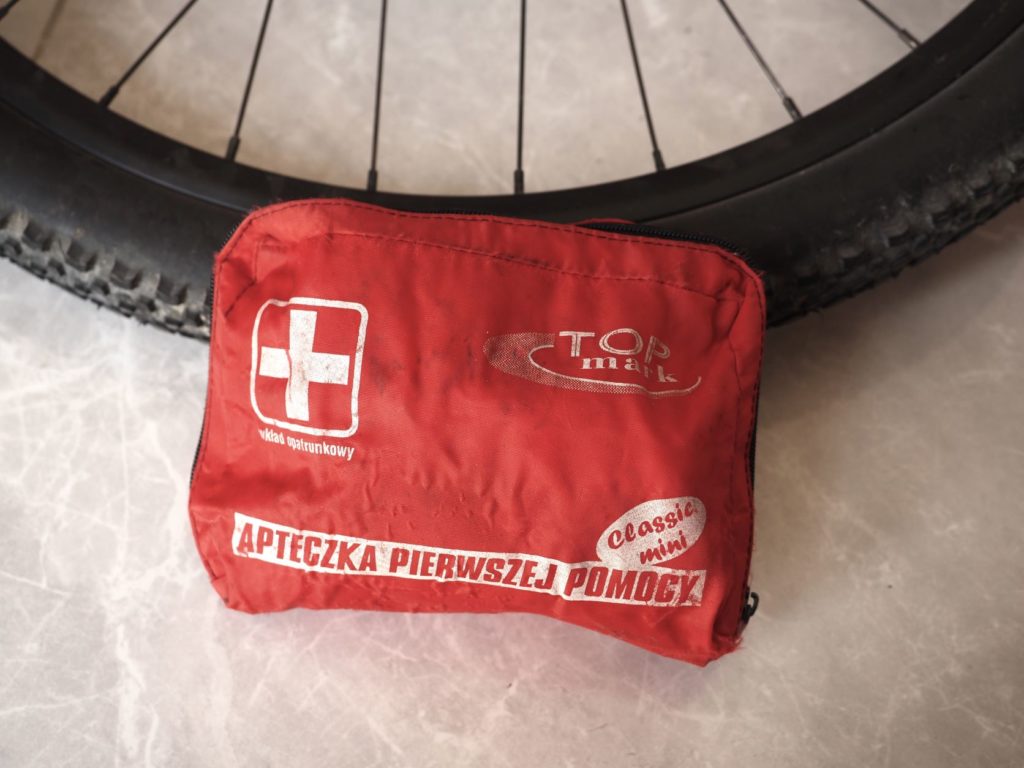Shit happens, and so do crashes, infections and injuries. A well-equipped first aid kit is crucial for damage control, especially if you’re cycling in remote areas. I will share my tips on what to pack in your first-aid kit, how to treat the typical cycling skin abrasions and how not to let injuries ruin your trip.
What to pack in your first-aid kit for a bicycle tour?
The importance of the first-aid kit depends on where you are about to travel. If you are going to stick to densely-populated areas and main roads, you only need the basics.
Some wound dressing, bandages, bandaids and antiseptic spray would do before you find the nearest pharmacy or an ambulance arrives.
But if you are planning on cycling in more remote areas in the mountains, you need to be more self-sufficient.

My first-aid kit contains:
- Emergency blanket – especially if I travel light and without camping gear. It will keep you warm and prevent hypothermia if you cannot move and are waiting for help to arrive.
- Antibac
- Antiseptic spray (I usually use Octenisept)
- Antibiotic gel – to fight the wounds free from infections
- Bandaids for the little wounds (I usually have that one in a roll, so I can cut the size I need)
- Bandages
- Wound dressing:
- Gauze
- Hydrocolloid wound dressing (like ten)
- or a silver-containing barrier dressing
- Electrolytes – I usually use them in effervescent tablets. You need to prevent dehydration on cycle tours, especially during the summer.
- Kinesiology tape
Over years of running too much and stretching too little, I ruined my knees. Because of that, they sometimes get overloaded by cycling through mountainous areas with kilograms of luggage on the rack. On one of my first bike tours, I even broke my meniscus. To give my knees some extra support, I use the kinesiology tape.
You can read more about different techniques to do it tutaj.

If you had any injuries before heading on your tour, I recommend consulting a professional. A physiotherapist will help you find the appropriate exercises to strengthen your weakest spots and prevent further injuries.
What medication should you carry on a bicycle tour?
- Ibuprofen/Paracetamol/Aspirin or whatever painkiller you usually use
- antidiarrheal medicines, e.g. loperamide
- If you know you are allergic to something, e.g., insect bites, consult your doctor before going on a trip. You might get a prescription for EpiPen for anaphylaxis.
Prescription medication on a long trip
If you are on prescribed medication, make sure to have enough supplies before your trip. You can also try to get prescriptions from your doctor that you can use abroad: if you are an EU resident and travelling within the EU, you can simply ask your doctor to issue a cross-border prescription for you (it doesn’t work for any medicine containing psychotropic substances).
Where to carry your first aid kit?
Make sure your first aid kit is easily accessible. A frame bag or seat bag is a good place if you use them. I use a small bag that I put in my handlebar bag.
If you carry medication, make sure to pack it properly and don’t leave it exposed to the sun. It might be better to store them in the panniers.
Before heading on a trip, check the expiration date of everything in your first-aid kit (if you cannot see the printed expiration date anymore – it is definitely expired!).
How to deal with road rash?
Road rash is an inevitable element of cycling. Sooner or later, you’ll fall off your bike and get your skin scraped off by rubbing against the tarmac. It is painful, and skin wounds can bring you a lot of trouble if you don’t take good care of them. I have some tips on how to take care of this kind of wound (based on my own experience and a doctor’s advice).
The first rule is: to keep it wet. On my trip across Bośnia i Hercegowina, I made a terrible mistake by putting a regular gauze dressing on my wounded elbow. As a result, the gauze got stuck to the healing wound, and every time I was changing the dressing, I had to rip some freshly recovered skin off.

It was not only hurtful but also didn’t quicken the healing. Then I discovered something called hydrocolloid wound dressing. It keeps the wound wet, so it doesn’t stick to the dressing. So now, whenever I have a road rash, I apply the hydrocolloid or silver-containing dressing.
Always wash your hands before starting the treatment of your wound. Rinse the wound with clean water. You can also apply some antiseptic. Be gentle while cleaning the wound of debris and grit. Apply the hydrogel dressing, put gauze on it and wrap everything with a bandage. Change it every day repeating the same steps. Normally, the wound should heal within two weeks. Once it is healed and you can take the bandage off, always apply sunscreen on it as the fresh skin is sensitive.
If you are bleeding heavily, or if something got stuck in the wound, get medical assistance.
Specific medication for faraway trips
If you are going to remote regions with a different climate than you are used to, it might be useful to check with a travel medicine doctor if you should bring any special medication with you. Always do proper research before heading on a trip – you cannot be prepared for every possible issue but you can protect yourself from the most common ones.

Odnośnik zwrotny: Najlepsze aplikacje z nawigacją na wyjazdy rowerowe
Odnośnik zwrotny: Bicycle touring gear list - Wobbly Ride